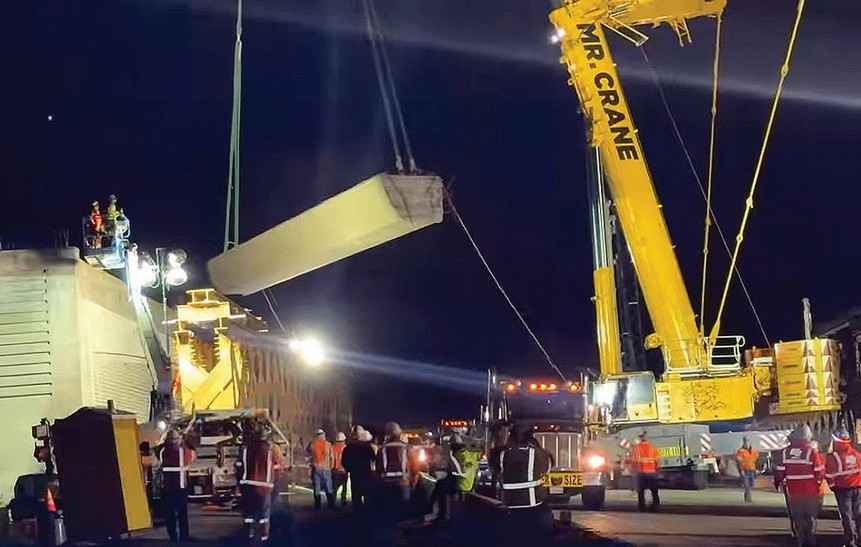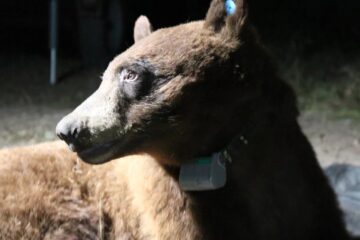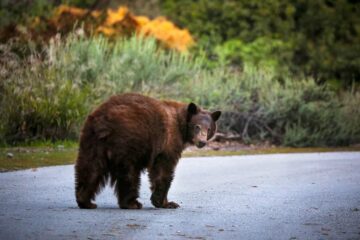Wildlife crossing bridge officials beam
Source of this article, the Camarillo Acorn, April 26, 2024

Construction crews direct the placement of the initial 127- ton concrete girder across the southbound 101 Freeway April 15 to support the pathway animals will use to traverse the highway
For the first time, drivers on the 101 Freeway are passing under parts of the Wallis Annenberg Wildlife Crossing at Liberty Canyon in Agoura Hills—structural elements that will support the turf-covered bridge itself where mountain lions, bobcats and other species are expected to tread above 10 lanes of Los Angeles County traffic.
It’s a milestone in the construction of the $92-million bridge, which is intended to provide safe passage between the Simi Hills and the Santa Monica Mountains for animals threatened by habitat fragmentation. Work began back in mid-2022 and is expected to be completed around the end of 2025 or early in 2026.
Nighttime closures of the 101 in one direction at a time started on Mon., April 15 to allow construction crews to lift the large, heavy girders and place them over the roadway, starting with the southbound lanes.
That first night, workers assembled the crane that was used to hoist the girders, then between Tuesday and Thursday, April 16-18, crews installed seven girders, according to Caltrans spokesman Eric Menjivar.
 Eighty-two precast girders, or beams, that will span over the freeway to support the bridge deck have been fabricated at a concrete facility in Perris, California, Menjivar said.
Eighty-two precast girders, or beams, that will span over the freeway to support the bridge deck have been fabricated at a concrete facility in Perris, California, Menjivar said.
Each girder over the northbound lanes is 103 feet long and weighs 140 tons, while each girder over the southbound lanes is 94 feet long and weighs 127 tons.
Massive walls will support the girders.
“More than 6,100 tons of concrete (already) have been poured and over 426 tons of bar reinforcing steel (rebar) have been placed by Caltrans to create the walls of the structure on either side of the freeway and the columns in the median,” Menjivar said.
The girders will reach from the walls to the median, forming part of the superstructure that will support the bridge deck.
That deck—the surface of the 200- foot bridge—will be covered in nearly one acre of native vegetation, providing a safe and natural habitat for the creatures who patronize the crossing.
The plan is to plant more than one million locally collected seeds from a nearby nursery to integrate the overpass into the surrounding ecosystem.
It will take around 5,000 plants and more than 5,000 cubic yards of soil to cover the top surface of the bridge, officials said.
As part of the project’s second phase, which will extend the crossing over Agoura Road, more than 10 acres of open space to the north and south of the freeway will be restored as habitat with coastal sage scrub and oak savannah— requiring an additional 50,000 plants.


0 Comments